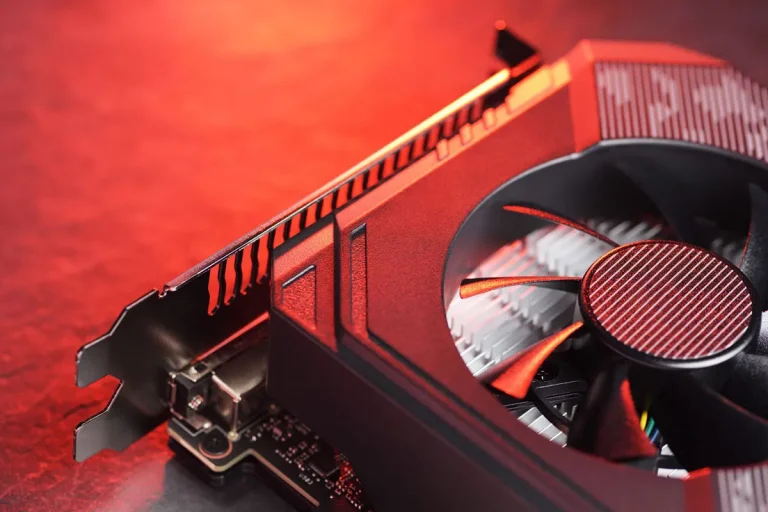Lg Nanocell Vs Ultra Hd: Which Tv Technology Is Better?
If you’re in the market for a new TV, you may be trying to decide between LG’s NanoCell TVs and more standard Ultra HD 4K models.
If you’re short on time, here’s a quick answer: Both offer improved color, contrast, clarity, and 4K resolution compared to older HD TVs.
However, there are some key differences between these technologies that are worth considering before making your purchase.
We’ll compare LG NanoCell vs Ultra HD TVs in detail below, looking at how they work, picture quality, viewing angles, price, and more.
By the end, you’ll understand the pros and cons of each to determine which is the better fit for your home theater.
How NanoCell and Ultra HD/4K TVs Work
When it comes to choosing a new TV, two popular technologies that consumers often consider are NanoCell and Ultra HD/4K.
Understanding how these technologies work can help you make an informed decision about which one is better suited to your needs.
NanoCell Uses Nanoparticles to Improve Color
NanoCell technology, developed by LG, uses nanoparticles to enhance color accuracy and overall picture quality.
These nanoparticles are integrated into the TV’s LCD panel, allowing for more precise control of the colors displayed on the screen. By filtering out unwanted wavelengths of light, NanoCell TVs are able to produce vibrant and lifelike colors.
One of the key advantages of NanoCell technology is its ability to maintain color accuracy even at wide viewing angles. This means that no matter where you’re sitting in the room, you’ll still be able to enjoy the same vivid and accurate colors.
Additionally, NanoCell TVs often come equipped with other advanced features, such as local dimming, which improves contrast by selectively dimming or brightening specific areas of the screen.
This helps to create deeper blacks and brighter whites, resulting in a more dynamic and immersive viewing experience.
Ultra HD TVs Rely on Higher Resolution
Ultra HD, also known as UHD, refers to the resolution of the TV screen.
While traditional HD TVs have a resolution of 1920×1080 pixels, Ultra HD TVs offer a resolution of 3840×2160 pixels.
This means that Ultra HD TVs can display four times the number of pixels compared to HD TVs, resulting in a sharper and more detailed image.
With their higher resolution, Ultra HD TVs are particularly well-suited for larger screen sizes or for those who sit closer to the TV.
The increased pixel density ensures that you can enjoy a more immersive viewing experience with finer details and smoother edges.
It’s worth noting that in order to fully appreciate the benefits of an Ultra HD TV, you’ll need access to content that is produced in 4K resolution.
Fortunately, many streaming services, such as Netflix and Amazon Prime Video, offer a growing selection of 4K content, allowing you to make the most of your Ultra HD TV.
Comparison
While both NanoCell and Ultra HD/4K TVs offer impressive visual enhancements, they do so in different ways.
NanoCell technology focuses on color accuracy and wide viewing angles, while Ultra HD TVs prioritize higher resolution and sharper details.
| NanoCell | Ultra HD/4K |
|---|---|
| Enhanced color accuracy | Higher resolution |
| Wide viewing angles | Sharper details |
| Advanced features like local dimming | Requires access to 4K content |
Ultimately, the choice between NanoCell and Ultra HD/4K will depend on your personal preferences and viewing habits.
If you prioritize color accuracy and wide viewing angles, NanoCell may be the better option for you. On the other hand, if you’re looking for higher resolution and sharper details, an Ultra HD/4K TV would be more suitable.
Remember to consider factors such as screen size, viewing distance, and available content when making your decision. Investing in a high-quality TV that aligns with your preferences can greatly enhance your entertainment experience.
Picture Quality Comparison
When it comes to comparing the picture quality of LG NanoCell and Ultra HD TVs, several factors come into play.
Let’s take a closer look at how these technologies stack up against each other:
Colors and Contrast
Both LG NanoCell and Ultra HD TVs offer impressive color reproduction, but they differ in the way they achieve it.
LG NanoCell TVs utilize advanced nanoparticle technology to produce a wide color gamut, resulting in vibrant and lifelike colors.
On the other hand, Ultra HD TVs rely on their higher pixel density to enhance color accuracy. This means that if color accuracy is a priority for you, Ultra HD might have a slight edge.
Clarity and Viewing Angles
When it comes to clarity and viewing angles, LG NanoCell TVs excel.
Thanks to their advanced IPS (In-Plane Switching) panels, these TVs provide excellent clarity even when viewed from off-center angles.
This makes them a great choice for larger rooms or situations where multiple people may be watching the TV from different positions.
Ultra HD TVs, while still offering impressive clarity, may suffer from color and contrast degradation when viewed from angles.
HDR Support
High Dynamic Range (HDR) is a technology that enhances the contrast and color accuracy of TVs, resulting in a more immersive viewing experience.
Both LG NanoCell and Ultra HD TVs support HDR, but the implementation may vary.
LG NanoCell TVs typically offer a wider range of HDR formats, including Dolby Vision and HDR10, providing you with more options for enjoying HDR content.
Ultra HD TVs, while still offering HDR support, may have limitations in terms of the specific HDR formats they support.
Refresh Rate
The refresh rate is an important factor to consider, especially for those who enjoy watching fast-paced action movies or sports.
LG NanoCell TVs typically offer higher refresh rates compared to Ultra HD TVs. This means that motion on the screen appears smoother and more fluid, reducing motion blur.
If you are a sports enthusiast or a gamer, this higher refresh rate can greatly enhance your viewing experience.
Prices and Sizes Available
When it comes to choosing a new TV, one of the key factors to consider is the price and available sizes of the models you are interested in.
Both LG NanoCell and Ultra HD TVs offer a range of options to suit different budgets and viewing preferences.
LG NanoCell
LG NanoCell TVs are known for their vibrant colors and impressive picture quality. They come in a variety of sizes, ranging from smaller models around 43 inches to larger ones over 75 inches.
The prices of LG NanoCell TVs vary depending on the size and features, but generally, they tend to be on the higher end of the spectrum due to the advanced technology used in their display panels.
If you’re looking for a smaller-sized TV for a bedroom or office, you can find LG NanoCell models in the 43 to 55-inch range. For those who prefer a more immersive viewing experience, there are larger options available, such as the 65 to 75-inch models.
Ultra HD
Ultra HD, also known as 4K, has become increasingly popular in recent years due to its stunning picture quality and increased resolution.
Ultra HD TVs are available in a wide range of sizes, starting from smaller models around 40 inches to massive screens over 85 inches.
The prices of Ultra HD TVs can vary significantly depending on the brand and features, but they generally offer more affordable options compared to LG NanoCell TVs.
This makes Ultra HD a great choice for those on a budget or looking for a more cost-effective TV.
If you’re looking for a smaller-sized Ultra HD TV, you can find models in the 40 to 55-inch range. For a larger and more immersive viewing experience, there are options available in the 65 to 85-inch range.
Comparison
When comparing the prices and sizes available for LG NanoCell and Ultra HD TVs, it’s important to consider your budget and the space where the TV will be placed.
LG NanoCell TVs tend to be more expensive but offer superior picture quality, making them ideal for those who prioritize image clarity and color accuracy.
On the other hand, Ultra HD TVs provide a more affordable option with a wide range of sizes, making them a popular choice for those looking for a budget-friendly TV.
Ultimately, the choice between LG NanoCell and Ultra HD will depend on your personal preferences, budget, and the viewing experience you desire. It’s recommended to visit reputable electronics retailers or check out online reviews and comparisons to gather more information and make an informed decision.
Our Recommendation
After carefully evaluating both LG NanoCell and Ultra HD TV technologies, we have come to a conclusion.
While both have their advantages, our recommendation goes to LG NanoCell for its superior picture quality and advanced features.
Picture Quality
When it comes to picture quality, LG NanoCell outperforms Ultra HD.
The NanoCell technology utilizes nano-sized particles that enhance color accuracy and provide a wider color gamut. This results in more vibrant and realistic images, making your viewing experience truly immersive.
Ultra HD, on the other hand, offers a high resolution but may not deliver the same level of color accuracy and depth as NanoCell.
Contrast and Black Levels
LG NanoCell TVs excel in contrast and black levels.
The technology used in NanoCell TVs allows for deeper blacks and better contrast, providing a more dynamic and lifelike image.
Ultra HD TVs, while still offering good contrast, may not match the level of depth and richness that NanoCell offers.
Viewing Angles
One of the standout features of LG NanoCell is its wide viewing angles.
With NanoCell, you can enjoy a clear and vibrant picture from virtually any angle. This is particularly beneficial for larger rooms or if you have a seating arrangement that requires a wider viewing angle.
Ultra HD TVs may experience some loss of picture quality when viewed from the sides, so if you have a seating arrangement that requires wider viewing angles, NanoCell is the way to go.
Smart Features and Connectivity
Both LG NanoCell and Ultra HD TVs offer a range of smart features and connectivity options.
You can easily connect your favorite streaming services, gaming consoles, and other devices to enhance your entertainment experience.
LG NanoCell, however, comes with LG’s webOS platform, which is known for its intuitive interface and seamless navigation. It also offers a wider range of apps and services compared to Ultra HD.
Conclusion
In summary, LG NanoCell TVs beat out standard Ultra HD options when it comes to rich, accurate colors and wider viewing angles. But Ultra HD TVs offer more affordable pricing for large screen sizes above 65″.
Consider going with a NanoCell for a premium home theater experience that impresses guests.
But Ultra HD makes more sense if you want an immersive experience on a tight budget.










